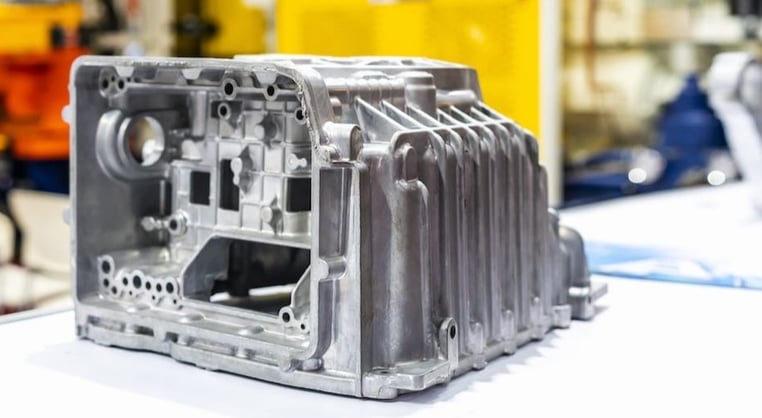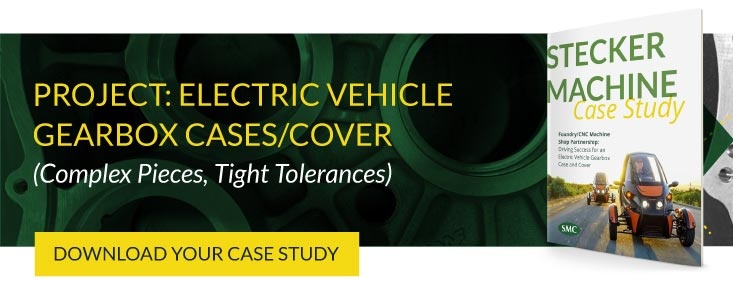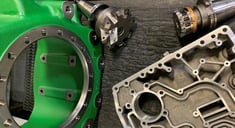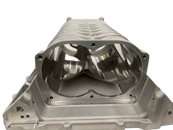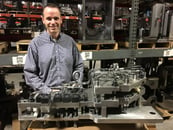These are demanding times.
For a new product design to be considered successful today, the manufacturing process used to build it must be scrutinized as much as the product itself. Modern designers look to design for manufacturing (DFM) to reduce costs, simplify how a product is produced, reduce design rework, and maintain overall quality.
Simply put, DFM is a process that aligns engineering and production, especially during initial design, and optimizes all aspects of manufacturing, from beginning to end. It’s an essential piece of the CNC machining world — find details in this CNC machining guide — as well as in numerous other industries.
Reason #1 — Early Involvement is a Must
The end goal of DFM is always to reduce effort and costs by simplifying and optimizing the process. These five areas receive extra emphasis in DFM:
- Process
- Design
- Material
- Environment
- Compliance/Testing
In CNC machining, design changes become more and more expensive and difficult to implement as the process goes on. The experts within a CNC machine shop can scrutinize the design and look at it from all angles.
Plus, proper DFM reduces the number of manufacturing operations required, so setup time drops as workflow improves. The physical design of the part itself is critical. Alignment can damage parts and/or equipment, hurt productivity, or perhaps shut things down altogether, so CNC quality control experts run exhaustive tests.
Reason #2 — Maximizing Opportunities. Minimizing Challenges.
For CNC machining, DFM streamlines the casting process, resulting in labor and cost savings.
Although casting is one of humanity’s oldest design and manufacturing processes, it’s still the method of choice for many industries. Here’s a brief look at casting in the metalwork field: metal casting involves pouring molten metal of various types into cavities formed into distinct shapes. Once the metal solidifies, the cast is separated from the mold.
Casting makes intricate metal products that, without casting, would be too complicated and costly to produce. DFM maximizes the already efficient process of casting, creating design opportunities while reducing challenges that come with assembling multiple pieces.
Different casting methods include:
- Aluminum die casting
- Sand casting
- Investment casting (modern version of lost wax casting)
- Permanent mold
- Lost foam casting (aluminum & iron alloys)
Although each method provides its own unique fabrication benefits, implementing DFM principles helps streamline any casting metal method.
Reason #3 — Accurate Calculation of Upfront Costs
In general, design decisions make up 70% of a CNC part’s manufacturing costs; the other 30% are production decisions (process planning and tool selection). By focusing on optimizing design, a reduction is realized in the cost of manufacturing.
Using DFM methodology allows design engineers to identify expensive, extremely challenging, or simply unattainable features early on — at the design stage — so producibility is assured. DFM can also optimize casting steps, increasing manufacturability as it also maintains functionality.
Reducing upfront costs also includes minimizing the total number of product parts. This immediately reduces the material amount needed and assembly required. Fewer parts also mean fewer resources needed for production, labor, engineering, and shipping.
Reason #4 — Scale Up With Confidence
A common casting struggle is scaling up from prototype (low volume) to production (high volume). Using DFM methods helps streamline CNC production scale-up. When implemented at the beginning of the cycle, it reduces redesign, boosts product quality, speeds time to market, and inspires confidence.
Also consider high-volume production assembly issues. Handling castings involves specific positioning and orienting, and even assembly direction makes a difference. DFM thinking takes into account these labor assembly issues early to make high-volume execution easier.
Reason #5 — Part Cost is a Consideration
DFM helps engineers make sure parts don’t require expensive secondary operations, which can make up as much as 80% of a component cost. That’s why many of a CNC part’s tooling and casting needs and costs are explored during the casting design stage. This prevents rework at the caster and reduces time, both in manufacturing and time to market.
As the number of parts increases, the total cost to fabricate and assemble rises. Plus, adding design documents and manufacturing processes drives costs higher. However, when the number of components is reduced, inventory costs related to purchasing and stocking drop.
Is Casting Even Right for Your Part?
A respected CNC machining partner should help you compare both the advantages and disadvantages of different types of molding processes. The selected casting method should be best-suited for a particular production run.
Stecker Machine is uniquely qualified to be a casting selection guide. Our engineering expertise (including DFM knowledge and quality control) is built into our process, which includes:
- Rapid prototyping & testing to maximize part performance before production
- Sharing insights on casting & machining designs far before launch
- Conducting advanced product quality planning (APQP) meetings
Plus, our solid, long-term relationships with more than 40 quality foundries mean our customers enjoy a reliable supply, knowing we’ll meet their deadlines.
Now that you have a good idea of DFM’s value within the casting process, dive into a case study that shows how a decades-long foundry relationship led to a successful project: an electric vehicle gearbox case and cover. Click the link below for your copy.

